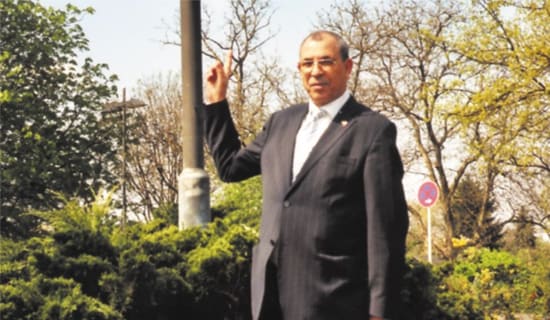
(Image courtesy: mychinanet.com)
Recently, the People's Daily Online, an official Chinese publication, published reports that expressed concern over the expansion of India's military capabilities, especially with regard to the proposed deployment of additional troops on the India-China border. The Chinese concern follows a recent report in the Indian media that the Indian army plans to station 100,000 more troops along the India-China border.
In recent years, Indian media have published a series of reports on China's growing military expansion and the incursion of Chinese troops into Indian territory. According to an Indian media report, India's Ministry of Defense recently "approved a Rs. 64,000-crore (approximately $13 billion) military modernization plan that would include raising four new divisions along the India-China border. Two of these would be part of a Mountain Strike Corps dedicated to offensive operations."[1]
In the two reports below, China's People's Daily Online accused Japan of facilitating India's military influence into East Asia and blamed India for "joining hands" with Vietnam to increase its influence in the South China Sea. The Chinese publication also accused the United States of relying on India in a strategic move to counter China and added: "India's troop increase on the border between China and India is aimed at meeting the requirements of the United States…"
"Japan has Been Busy Facilitating the Expansion of India's Military Influence into East Asia"
Following are excerpts from the November 10 report:[2]
"India's defense ministry has already approved a $13 billion military modernization plan and has decided to send an additional 100,000 soldiers to the China-India border areas over the next five years. This move is regarded as India's second phase of a military buildup along the China-India border.
"Once the plan is approved, it will be the Indian military's largest-ever expansion plan and its largest increase in the number of soldiers along the border with China since the India-China border clash in 1962 ended.
"India's move is first associated with the adjustments to its national security strategy. India has begun to consider China as an opponent. The East China Sea and South China Sea issues have further continued to expose some countries' 'envious, jealous, and hateful' attitude toward China.
"The changes in the international and regional security landscape will negatively affect China and other countries involved, but they will benefit one country: India.
"The United States has recently cemented its ties with India and has regarded India as a crucial strategic alliance. At the same time, Japan has been busy facilitating the expansion of India's military influence into East Asia."
"India Not Only Stepped into the South China Sea Issue… But Also Increased Troops on the Border; The People of the Two Countries Do Not Understand Each Other Well"
"India not only stepped into the South China Sea issue, which is very sensitive to China, but also increased troops on the border between China and India and upgraded their weapons. India is also strengthening its military exchanges with the countries around China.
"When I was sent to the Indian Army Education Officer Training Center to study and participate in exchanges in 2007 and 2008, I met military officers from Vietnam, Afghanistan, Kazakhstan, Laos, and Outer Mongolia.
"Second, the move made by India is connected with some practical issues of China-India relations. The general development trend of China-India relations is actually good. The high-level exchanges and political relationship between the two countries are quite harmonious. However, the people of the two countries do not understand each other well and the mutual military trust is also not strong enough.
"Between China and India, there are not only border issues left over by history, but also practical issues of the complex China-India-Pakistan triangle relations. India always worries about the good relationship between China and Pakistan, which is the biggest problem between China and India."
"India Insists Joining Hands with Vietnam to Step in the South China Sea Issue; All of These Factors will Not Help Promote the Mutual Military Trust between China and India"
"Meanwhile, India insists joining hands with Vietnam to step in the South China Sea issue. All of these factors will not help promote the mutual military trust between China and India. India incorrectly believes that China develops Tibet as a shield, and therefore it continues to strengthen its military power on the border to guard against and contain China.
"India's arms expansion is also related to its domestic political climate. Certain Indian elites always take China as a frame of reference for India's development. As China has a clear lead over India in many areas, they are worried that India may lag behind China in seizing energy resources, and thus naturally see China's peaceful development as a 'threat.'
"Certain Indian elites and media outlets have repeatedly criticized the Indian government for its lack of military investments, which they claim has led to slow development of the country's armed forces….
"India is now emerging as a major buyer on the international arms market, and large amounts of advanced weapons from the United States, Russia, Israel, and European countries have supplemented India's troop increase along the border areas with China.
"In fact, deploying 100,000 more soldiers along the border areas with China is more of a political move than a military one…."
"The Spread of the 'China Threat' Theory, the Increase of [Indian] Troops… All Aim to Make a Breakthrough in Further Increasing [India's] Military Spending"
Following are excerpts from the November 15 report:[3]
"The average growth rate of India's military spending has stood at 7-8% percent for more than a decade, and its military spending ranks ninth in the world. India is also the world's largest arms importing country.
"The spread of the 'China threat' theory, the increase of troops to the disputed areas near the China-India border, and the display of a tough attitude toward China all aim to make a breakthrough in further increasing military spending.
"Despite India's huge military spending, its economic growth has recently been slow, with last year's economic growth rate hitting a six-year low. It is very difficult to considerably increase military spending for a military buildup amid the economic downturn, so India needs to first create a tense atmosphere and transfer domestic problems in the hopes of securing more military spending.
"India has continued to hold joint military drills with China's neighboring countries over a recent period, showing that it evidently intends to contain China. Furthermore, India's move to send an additional 100,000 soldiers to the China-India border areas is consistent with its earlier actions aimed at containing China."
"The United States Needs to Rely on India to Restrict China; India Needs to Show Its Value to the United States by Flexing Its Muscle Toward China"
"In addition, the United States needs to rely on India to restrict China. India needs to show its value to the United States by flexing its muscle toward China so that it could gain U.S. military support and help raise its international status.
"India's troop increase on the border between China and India is aimed at meeting the requirements of the United States, and then getting support from the United States. However, will India realize its goal?
"First, the action will [make] tense the situation of the region and harm India's own interests. Increasing troops on the border area is always a sensitive move, and it is especially sensitive to increase troops on a disputed border area.
"Second, the action is completely not worthwhile. Currently, India has 40,000 troops in the disputed area [i.e. along the border with China], and if the further 100,000 is deployed, the total number of the troops will reach 140,000. In an era when precision-guided weapons are developing rapidly, everyone with common sense knows that concentrated troops could be eliminated easily…."
[1] www.timesofindia.com (India), November 2, 2011.
[2] People's Daily Online (China), November 10, 2011. The text of the article has been lightly edited for clarity.
[3] People's Daily Online (China), November 15, 2011. The text of the article has been lightly edited for clarity.








